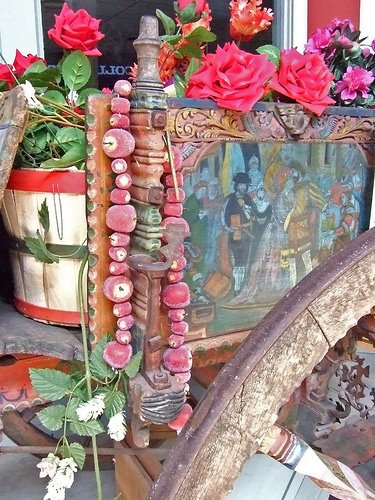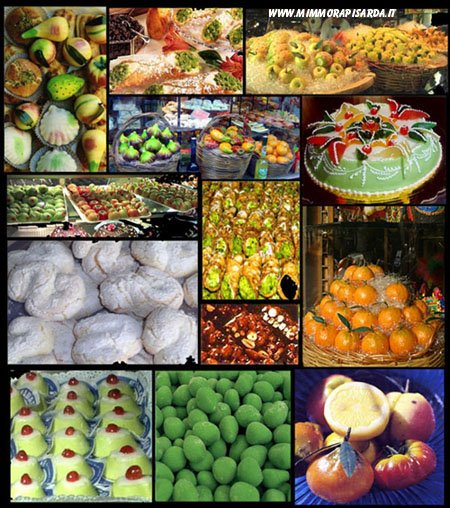
Known all over the world as Italy’s first natural marine reserve, it is called the ‘black pearl’ or ‘solitaire’ of the Tyrrhenian sea : Ustica, is a special island that brings back eternal memories of my childhood. Ustica is an island that has never changed from that sleepy, beautifully preserved feeling, a timeless island not only because of its old geological age, but because of its people...
Signor Salvatore born in Ustica 75 years ago personifies for me the ancient, long-lasting - eternal feel of this tiny volcanic island.
I coincidentally ran into his stone-built house on my last trip to the island as I was looking for some Lenticchie di Ustica (Ustica's lentils) to buy. I found Salvatore still sitting under the ancient olive tree where I had left him some years ago. He was still weaving baskets of reed and cane with his gnarled hands. His wide-brimmed straw hat (which he wears while trotting along on his donkey, transporting vegetables) was on the ground beside him.
I walked across the road to the wall where Salvatore's baskets hold the produce they sell to summer visitors: eggplants, peppers, tomatoes, onions, capers, fava beans and the famous, delicious ustica lentils.
The crickets seemed to perform their never ending chirping tribute to a beautiful mid-summer sunset and I, once again fall in love with the colour of Ustica : pristine white and pastels of the stuccoed houses, black of the volcanic rock walls dividing the fields, red and purple bougainvillea and red, white, pink hibiscus bursting in flashes of colour, here and there. White-flowered caper vines grow from crevices in the the black rock walls and crawl along the cliffs which drop to the aquamarine sea.
As Salvatore keeps weaving his baskets, I ask him about the secret of his long life. A life of hard work in the fields, cultivating the land with his bare hands under the strong Sicilian sun.
"It must be the lentils" he smiled. "I always eat a plate of our lenticchie for dinner"
Cultivated on the lava rich soil of Ustica, local lentils are seeded in January and picked in the first half of June.
The little plants are left in the field to dry, then they are uprooted and collected in bunches in the stables in order to be struck.
The little plants are left in the field to dry, then they are uprooted and collected in bunches in the stables in order to be struck.
Salvatore and his family still harvest the lentils in the traditional way : dividing the straw from the lentils trampling on the little plants with big stones dragged by donkeys and then throwing them in the air.
Ustica lentils Lentils are considered legumes with high nutritional value and contain about 25% of proteins, 53% of carbohydrates and 2% of vegetable oils. They are also rich in phosphor, iron and vitamins of the B group. According to a nutritional point of view, 100 grams of lentils are equal to 215 grams of meat. Lentils - just like all the other legumes - are characterised by a high quantity of proteins, a good quantity of carbohydrates and a low quantity of fats.
Ustica lentils are also rich in vitamins, mineral salts and fibres, in particular phosphor and potassium. Lentils are a food suited for the prevention of arteriosclerosis because the low quantity of fats contained in them are of the unsaturated type.
The richness in fibres make lentils very useful for the proper functioning of the bowel system and they are also useful in lowering cholesterol. Lentils are considered - thanks to the good quantity of proteins they contain - a highly nutritional food, especially when consumed together with cereals (such as rice, pasta and bread), are very digestible and have no cholesterol. They also contain "isoflavones", substances which clean the organism, as well as iron, calcium and vitamin B.
The richness in fibres make lentils very useful for the proper functioning of the bowel system and they are also useful in lowering cholesterol. Lentils are considered - thanks to the good quantity of proteins they contain - a highly nutritional food, especially when consumed together with cereals (such as rice, pasta and bread), are very digestible and have no cholesterol. They also contain "isoflavones", substances which clean the organism, as well as iron, calcium and vitamin B.
This is Salvatore's long-lived lentils soup recipe :
(about 6 servings)
1 pound (450 g) Ustica lentils
1/2 cup olive oil
2 cloves garlic
Minced parsley
4 tomatoes, blanched, peeled and seeded
Salt and pepper to taste
1/2 cup olive oil
2 cloves garlic
Minced parsley
4 tomatoes, blanched, peeled and seeded
Salt and pepper to taste
Put the lentils in a pot with enough water to cover them to a depth of 3-4 fingers, and simmer them covered over a low flame for about 2 hours; keep more hot water handy should the lentils absorb all the cooking water. When they're close to being done, add the remaining ingredients. Cook for another half hour and serve.







oh my god! Your blog is amazing! thank you! I will be reading it regularly. (100% Sicilian on both maternal and paternal sides of my family).
ReplyDeleteMain goal in life? Go to Sicily for more than just a few weeks!!
I haven't looked yet.. but curious if you've been to or ever heard of Sommatino? I will be pouring over your blog this evening when I get home from work. Thanks again so very very much!!
ReplyDeleteYes, I know a little about Sommatino. It is famous for the "acquapark" and there is a lovely pub, I don't remember the name, but is just where the "corso" (main rd) starts . Good food and warm atmosphere.
ReplyDelete